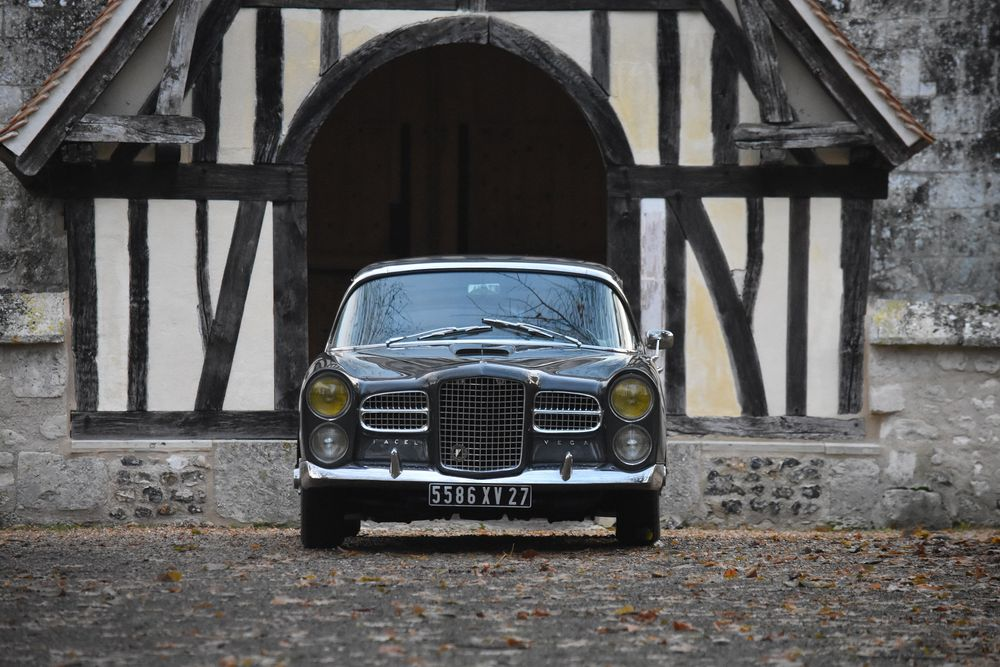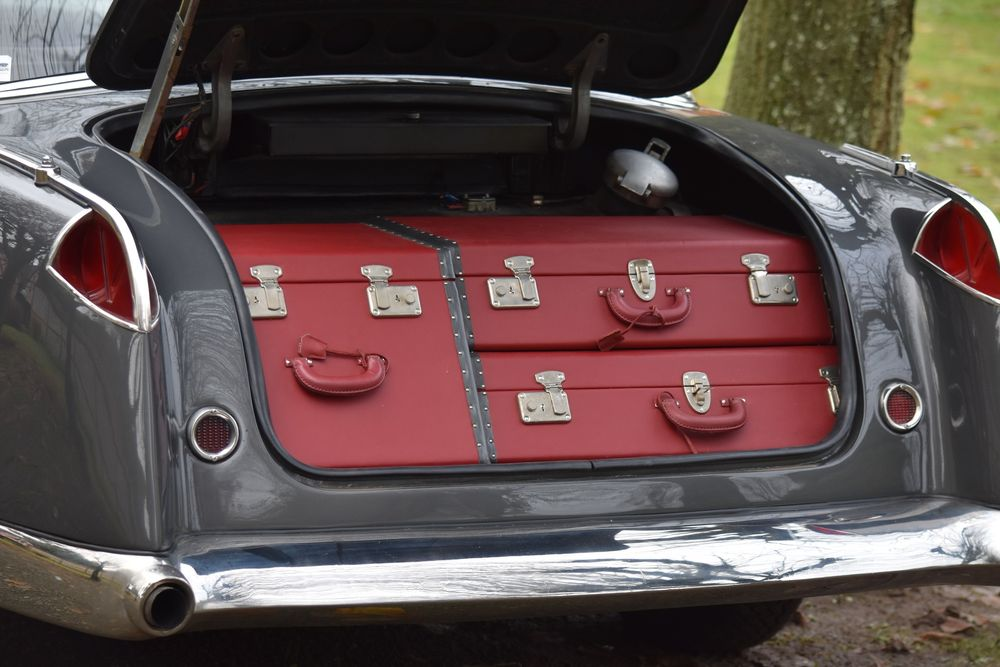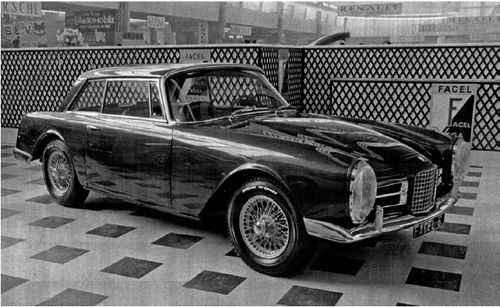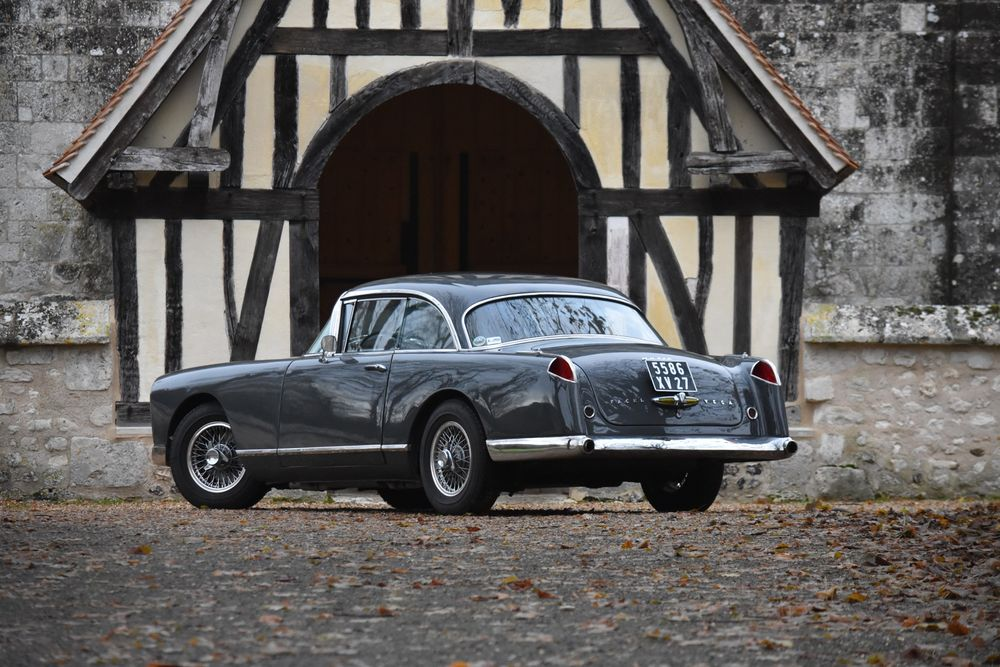This article is going to cover the details about the Facel Vega as a brand in general and not any specific model. Whilst reading up about coach built cars from the 50's and 60's I managed to come across the Facel Vega brand. The Facel Vega brand really intrigued me as a car enthusiast and got me digging deeper. what your going to read in this article is a culmination of all the interesting facts that I came across.
History behind Facel Vega
The Facel Vega is a car company that blends American muscle with French opulence and luxury. Facel is a company that was born as a division of Bronzavia, a French aeronautics company present to date, supplying sheet and metal, mechanically welded assemblies for aeronautics.
 |
| The parent company behind Facel |
The founding figure behind the whole operation was Jean Daninos, he was the one responsible for Forges et Ateliers de Construction d'Eure-et-Loir, or (Facel) in 1939. They were first producing machine tools for the aircraft industry followed by body shells Panhard, Simca, and Ford Comète.
 |
| Designed by Pininfarina built by Facel |
If Jean Daninos had kept still for any longer, Facel would have continued to produce parts for various other manufacturers. Only 15 years later in 1951 he showcased a coupe built in the same factory to show Facel's capabilities. The model displayed true craftsmanship and the capabilities of Facel.
 |
| The factory at Colombes |
Before going into the details of Facel Vega and the various versions that they built, let us learn about Jean Daninos himself. Born on 2 December 1906 he was of Greek origin born in Paris we will learn more about him through the article.
The Italian connection
The French at the time were known for building mass-market cars and Jean wanted to differ from this. Jean Daninos was the man who helped Battista Pinin Farina build the stunning and rare Bentley MK VI Cresta. After the war had ended Farina had designed this Bentley. However, there was a rule at the 1946 Paris Autos salon that did not allow companies from countries to exhibit who were enemies.
 |
| Bentley MK VI Cresta |
This is where Jean Daninos came to help Battista’s company Pinin Farina. Jean Daninos was no stranger to the automobile industry; he began his career by training under André Citroen, where he helped design the groundbreaking Traction Avant.
The prototype to production
The first car or rather a prototype debuted in 1951 at the Facel Vega factory located at 132 Boulevard de Valmy in Colombes. It was in 1954 that the actual Facel Vega debuted at the Salon de l'Automobile Paris. By the time the Facel debuted other French coach-built cars like the Delage and Delahaye were long gone, and Talbot was also on the verge of closure. None the less the Facel Vega FV was met with a lot of interest, and production started by March 1955 with the V8-powered four-seater grand tourer.
 |
| The Facel Vega at the 1954 Paris Auto show |
Even for a car enthusiast like me, it is quite hard to sum up and write about one specific model. The V-8 that powered the Vega was sourced from Chrysler as none of the European manufacturers at the time had a V-8. It was much later that cars such as the Jenson Interceptor got V-8s.
Facel Vega for their cars got 8 different V-8 engines all sourced from Chrysler during its production run, starting with the Facel Vega FV which had a 4528cc De Soto Hemi V8. During the two months - from 1955 March to May - Facel Vega built 11 coupes.
 |
| Facel Vega FV |
Facel Vega kept getting changes to the body with some models getting slightly wider than the previous generation, and some generations such as the FV2 had a wrap-around windshield, giving it an even more elegant look.
 |
| FV2 |
The initial cars had a power output of 200 hp which was more than enough to power this French grand tourer, while the later models saw a bump in power to 250hp.
 |
| Pont-a-Mousson 4 speed transmission |
Brakes a bugbear
The Facel Vega had an Achilles heel which was the brakes. Some of the automotive journalists from Autocar who got a chance to drive the car said that the pedal travel was just too much, and the car would require a high amount of brake pumping to perform an emergency stop. Spirited driving also led the breaks to fade. They went to the extent of snubbing the French luxury cruiser by saying "Ultimately the makers must follow the lead of British manufacturers by fitting discs instead of drums".
 |
| The optional Dunlop brakes |
The HK500
 |
| HK500 French cars had yellow lights due to the fog |
Even with the negative reviews, the HK500 continued with the drum brakes but offered Dunlop disc brakes as an option in 1959. The HK500 produced 330 hp from a 6L Hemi V-8 that sent power to the wheels through a three-speed Torqueflite transmission. If a buyer paid extra, they could get the Pont-A-Mousson 4-speed transmission. This also saw a bump in power up to 360hp allowing for a solid 250kmph cruise.
 |
| The side profile is the best view of the car |
The Pont-A-Mousson was the French equivalent of Borg Warner. The transmission found in the HK500 could trace its roots back to agricultural equipment and later in the Ford/Simca Comete. The large transmission mated to the big lumpy American V-8 meant that it had a smooth ride and was reliable.
 |
The HK500 had plush interiors with thick leather seats and a sleek exterior. The car was garnished quite generously with chrome. However, due to the sheer size of the car, it looked elegant and not overdone. The cars' performance and elegance drew wealthy buyers from across the globe such as Christian Dior, Frank Sinatra, and Stirling Moss (Stirling Moss was known to have driven his Facel to and from races).
 |
| The 6L Chrysler V-8 |
Without any doubt the HK500 was the most popular car that they manufactured with a total of 490 units being built.
 |
| The wood was actually aluminum painted to look like wood |
This being the first right-hand drive model on offer they sold 107 of right-hand drive units. The HK500 had a good run from 1959 to 1961. The denomination HK 500 was derived from its weight/power ratio of five kilos per hp, which was a marvelous accomplishment back in the day.
 |
| View of the dash and the panoramic wind-shield |
The HK500 had a panoramic windscreen, a full leather dash, and a centre console a first for any French car. The bodywork integrated the tail lamp and the exhaust was merged with the rear bumper.
The HK 500 even came with its own 3-piece fitted luggage, making the luxury experience even better. The HK500 was preceded by the Facel Vega 2, which was even more powerful at 390hp allowing a top speed of 240kmph! It was considered the finest French car produced post-1945.
 |
| The Fitted luggage and integrated exhaust |
 |
| The plush leather seats |
The different models
There was a 4-door sedan version which I will not get into too much detail as I found it hard to comprehend the different names and versions each source mentioned for these cars. Nevertheless, the 4-door version was known as the Facel Vega Excellence, was a magnificent sedan with a pillarless door construction along with suicide rear doors (doors that opened the opposite way). Since it was a sister car to the HK500, the powertrain remained the same, but the body was modified to accommodate more rear seat space.
 |
| Facel Vega Excellence |
The Facel Vega faced a steady decline in their already small sales chart causing them to come out with smaller cars like the Facel Facelia powered by a twin-cam 4-cylinder, but as anyone could guess this was dismal, and neither were they reliable. This ended up leading to the Facel Vega 3 which was smaller (it almost resembled a French Mercedes SL 190) and had a Volvo P1800 derived four cylinders.
 |
| Facel Facelia beautiful yet unreliable |
A total of 1,500 Facel 3s were built in 1964, which restored the reliability problems that were faced in the Facelia. Jean Daninos was asked to resign in August of 1961 and in his place, André Belin would arrive. The efforts made to separate the Facel Vega from the Facelia were a little too late. The name was tainted, and a steady decline never saw the Facel brand a chance of coming back again.
 |
| The Facel 3 |
The Facel 6 was the last car to have ever been produced and it came with a 3-liter 6-cylinder BMC (British Motor Corporation) which was also found in the Austin- Healey 3000 (although here it was reduced to attain tax benefits).
 |
| Facel 6 |
It had become obvious that Facel was in severe debt due to all the warranty replacements on the Facelia and the lack of sales that led to the closure of the company. The factory doors were finally shut on October 31, 1964, having produced just under 3000 cars in 10 years.
 |
| Facel 2 The true successor to the HK500 |
The cost of an HK500 when new was 39,500 francs and for the Excellence, it was 52,000 francs, not cheap by any standards. But that was what the French luxury costed an individual at the time. However, with it came the benefits of a reliable V-8, and the uniqueness as it was not a well-known brand. If you want to now buy one of the few surviving units, then it would cost you well over EUR 200,000.
It was a very nice experience researching and learning about this unique French opulence on 4 wheels that has sadly been forgotten and is in history books.
https://dyler.com/blog/204/facel-vega-created-by-a-frenchman-with-an-american-heart





Well researched article. I wasn't aware of the existence of a company by this name. It has given me another brand that can talk about.
ReplyDeleteVery well written .A lot of reading painstaking research has gone into this blogg.For those who are "car lovers" this blogg is a "feast".
ReplyDeleteCongratulations Aniruddha.